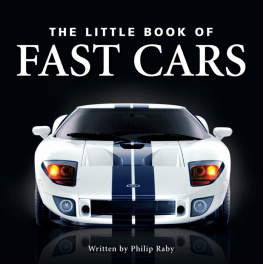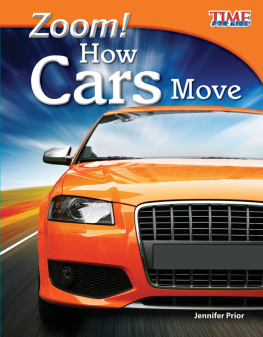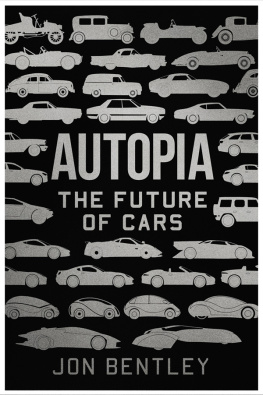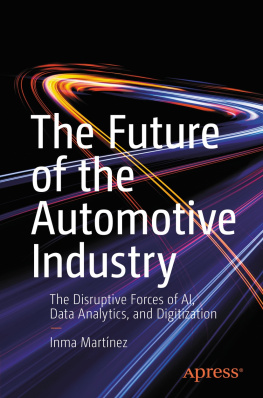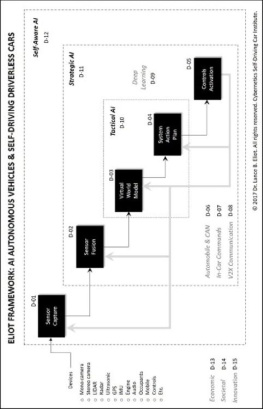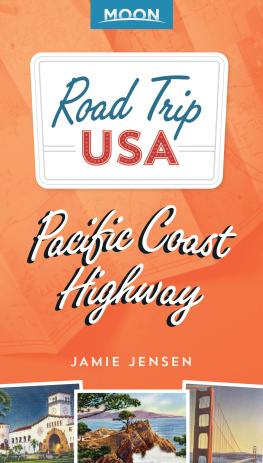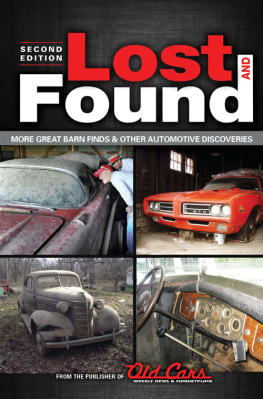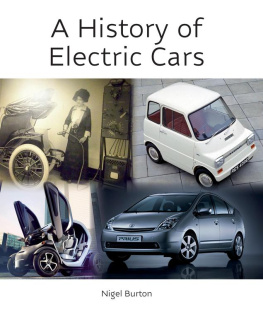STREET SMART

Copyright 2015 by Samuel I. Schwartz.
Published in the United States by PublicAffairs, a Member of the Perseus Books Group
All rights reserved.
Printed in the United States of America.
No part of this book may be reproduced in any manner whatsoever without written permission except in the case of brief quotations embodied in critical articles and reviews. For information, address PublicAffairs, 250 West 57th Street, 15th Floor, New York, NY 10107.
PublicAffairs books are available at special discounts for bulk purchases in the U.S. by corporations, institutions, and other organizations. For more information, please contact the Special Markets Department at the Perseus Books Group, 2300 Chestnut Street, Suite 200, Philadelphia, PA 19103, call (800) 810-4145, ext. 5000, or e-mail .
Book Design by Linda Mark
Library of Congress Cataloging-in-Publication Data
Schwartz, Samuel I.
Street smart: the rise of cities and the fall of cars/Samuel I. Schwartz with William Rosen.First edition.
pages cm
Includes bibliographical references and index.
ISBN 978-1-61039-565-6 (ebook) 1. Local transitUnited States. 2. Urban transportationUnited States. 3. City planningUnited States. I. Title.
HE4451.S387 2015
388.40973dc23
2015014716
First Edition
10 9 8 7 6 5 4 3 2 1
To my brilliant and beautiful wife Daria, who has had to listen to me talk about transportation ad infinitum and has stuck with me nonetheless.
Also, to my advisor and professor at Penn, Dr. Vukan Vuchic, who made me see cities through an entirely new lens.
CONTENTS
Bedford and Sullivan
I WAS BARELY OUT OF THE SECOND GRADE WHEN A TRANSPORTATION revolution changed my life.
It was 1954, and my best friend, Freddy Cohen, had announced that he was moving. And not moving a few streets from our block in the Bensonhurst section of Brooklynwhich would have been bad enoughbut all the way to the other side of the country, to Los Angeles, California. No more buses and subways for the Cohen family. They were migrating to the most automobile-friendly city in the world.
It was a sign of things to come. The following year, my other best friend (youre allowed up to six when youre less than ten years old), Shelly Pepper, moved to Long Island. Barry Politiks family hung in for a few more years: his family didnt leave Brooklyn for Rockland County, a suburb north of New York City, until 1961. Then all three of my siblings moved to the burbs. By then, not only had Walter OMalley torn the heart out of Brooklyn by moving the Dodgers to be closer to Freddy Cohen, but a team called the Los Angeles Dodgers had even won the World Series.
It was enough to make you hate OMalley, along with Robert Moses, New York Citys parks commissioner, whose stubbornness over building a replacement for Ebbets Field, the crumbling but beloved home of Brooklyn baseball, gave the Dodgers owner exactly the excuse he needed to head west. And he didnt go alone. Horace Stoneham, the owner of the New York Giants, followed OMalley to California, leaving the even-more-decrepit-than-Ebbets-Field Polo Grounds for Candlestick Park, just south of San Francisco. Huge transformations in Americas transportation infrastructure dominated all these decisionsnot merely the lower cost of air travel, which made transcontinental road trips feasible, but the belief, shared by owners and fans alike, that driving a car to a ballpark was the best possible way to get there. In fact, that driving was the best possible way to get anywhere.
Although Dodger fans, more and more of whom had preceded the Peppers and Politiks to the suburbs of Long Island, could drive their cars to Ebbets Field, they couldnt park them anywhere near the place. Shoehorned into a city block at the corner of Bedford Avenue and Sullivan Place, it had no parking facilities at all. As early as 1952, OMalley had hired the designer Norman Bel Geddes to design a replacement, one the New York Times called grandiose because of itswait for itretractable roof, foam rubber seats, heated in cold weather... automatic hot dog vending machines, and a synthetic substance to replace grass on the entire field. But all that was window dressing. The key to OMalleys vision was a parking garage adjoining the new ballpark big enough for seven thousand cars.
There was no way to put that kind of garage on the city block occupied by the old Ebbets Field. OMalley proposed building the new stadium in a different part of Brooklyn. He wasso he saidwilling to build the grandiose park himself, but he needed the land condemned. And that meant he needed the help of Robert Moses. Moses loved cars, but he had no time for sports. The feud between the two powerful and stubborn men played out over nearly three years, and people are still fighting over which one deserves more blame for the Dodgers exodus. Or whether the blame resided instead on a set of impersonal demographic changes that were remaking America in the mid-1950s.
Of course, my ten-year-old brain didnt think in those terms, exactly. Mostly, I just hated Walter OMalley. I was far from alone. The late Village Voice and New York Daily News columnist Jack Newfield tells a story of saying to fellow newsman and Brooklynite Pete Hamill, you write on your napkin the names of the three worst human beings who ever lived, and I will write the three worst, and well compare. Each of them wrote the same three names, in the same order: Hitler, Stalin, and Walter OMalley.
I was an adult before I realized we were both part of a revolutionary change in the way Americans lived, worked, and especially moved from place to place. Over the course of the next fifty years, the most important parts of the built environmentthe streets on which we lived, played, and workedwere impoverished by the seemingly irresistible centrifugal forces of sprawl and suburbanization. My own block, 83rd Street between 19th and 20th Avenues, stopped hosting stickball games and the kid-run 83rd Street Olympics. It no longer featured a daily lineup of kids sitting on curbs as if they were benches.
The phenomenon occurred in nearly every city that had been built before the advent of the internal combustion engine. Bedford Avenue, in its various incarnations, was already at least two centuries old before the first Ebbets Field was built. If you had a time machine that let you position a camera at the corner of Bedford and Sullivan, and if you set that camera to take a photo every fifty years or so starting in 1600, youd see Native Americans on foot give way to horses and ox cartsfirst Dutch, then English, and finally Americanonly to be supplanted by streetcars, buses, and automobiles. Youd see farms replaced by houses of commerce and houses of worship. During the last fifty years of your time-lapse movie, youd see the original entrance to Ebbets Field, at the corner of Bedford and Sullivan, transformed into Public School 375, better known as Jackie Robinson School.
The lesson of all this wouldnt be just the obvious one: that change is constant. What that hypothetical stop-motion history of a Brooklyn intersection also shows is that while the modes of transportation change every few years (horse-drawn cabs give way to early internal combustion; streetcars are replaced by buses) and even the buildings themselves change every few decades, the intersection itself occupies the same space, the same latitude and longitude coordinates, as it did centuries ago.
Next page

